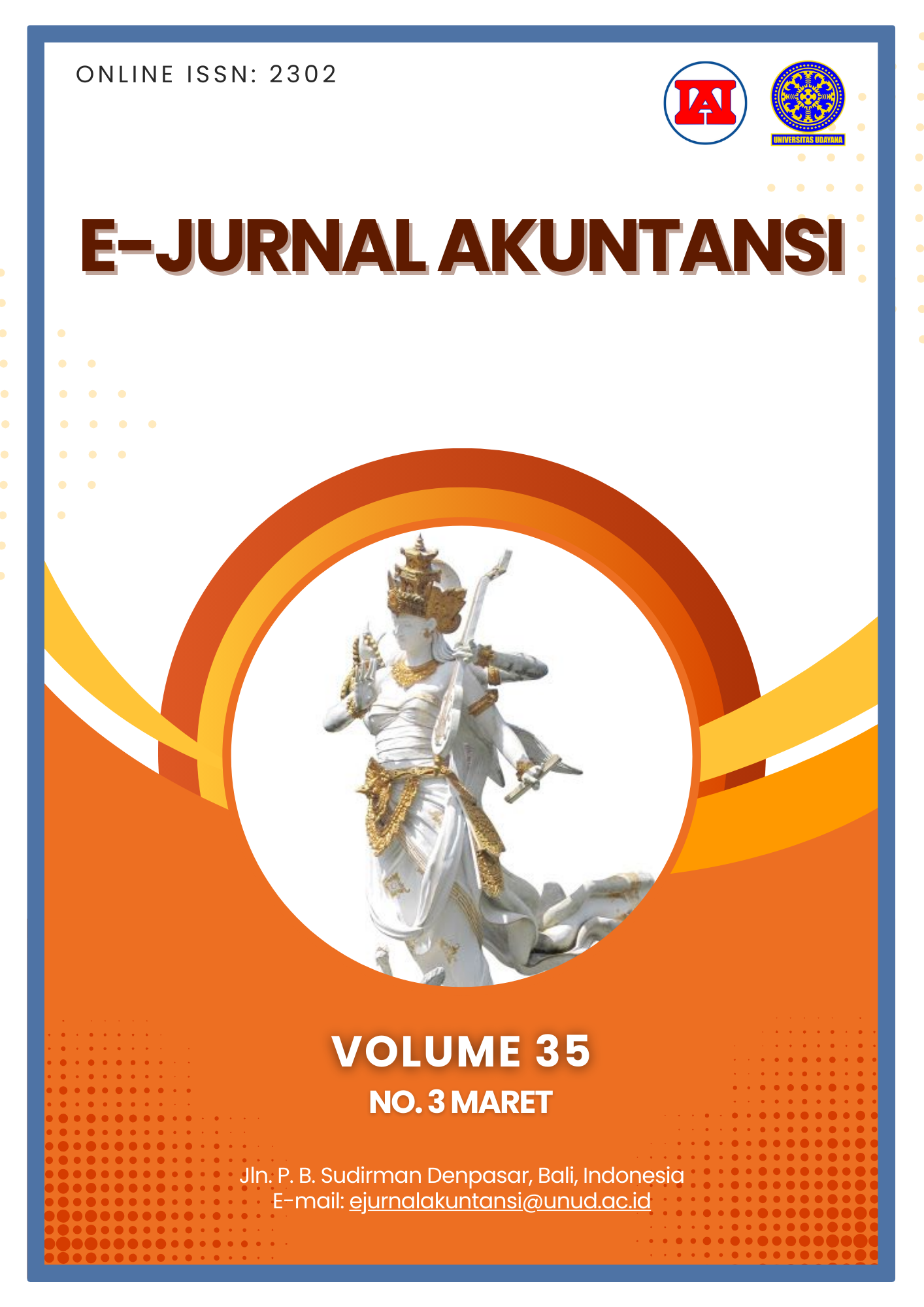Implementation of Balance of Control and Flexibility of Government Budget using Management Control System
Abstract
This study aims to analyze the application of control balance and budget flexibility in the XYZ Government Work Unit using the four levers of control framework. The research was conducted using the case study method. XYZ Work Unit (Satker) is one of the units implementing tasks and functions in the field of government internal audit. Primary data was obtained from semi-structured interviews with Satker XYZ management. Secondary data is obtained from reviewing planning, implementation and performance reporting documents at Satker XYZ. The research resulted in the application of control balance and budget flexibility in the XYZ Government Work Unit can be supported by communicating the beliefs system, sanctioning conformity with the boundary system, preparing detailed budget diagnostic controls and interactive controls in predicting the need for budget changes.
Keywords: Government Budgeting; Budget Control; Budget Flexibility.
Downloads
References
Allen, R., Hemming, R., & Potter, B. (2013). The International Handbook of Public Financial Management. Palgrave Macmillan UK. https://books.google.co.id/books?id=MTohAQAAQBAJ
Anessi-Pessina, E., Barbera, C., Sicilia, M., & Steccolini, I. (2016). Public sector budgeting: a European review of accounting and public management journals. Accounting, Auditing & Accountability Journal, 29(3), 491–519. https://doi.org/10.1108/AAAJ-11-2013-1532
Argento, D., Kaarbøe, K., & Vakkuri, J. (2020). Constructing certainty through public budgeting: budgetary responses to the COVID-19 pandemic in Finland, Norway and Sweden. Journal of Public Budgeting, Accounting & Financial Management, 32(5), 875–887. https://doi.org/10.1108/JPBAFM-07-2020-0093
Bukh, P. N., & Svanholt, A. K. (2022). Balancing Tight Budget Control and Quality Within Social Services in a Danish Municipality. Scandinavian Journal of Public Administration, 26(3), 91–113. https://doi.org/10.58235/sjpa.v26i3.7012
Di Francesco, M., & Alford, J. (2017). Balancing budget control and flexibility: the central finance agency as ‘responsive regulator.’ Public Management Review, 19(7), 972–989. https://doi.org/10.1080/14719037.2016.1243812
Frow, N., Marginson, D., & Ogden, S. (2010). “Continuous” budgeting: Reconciling budget flexibility with budgetary control. Accounting, Organizations and Society, 35(4), 444–461. https://doi.org/https://doi.org/10.1016/j.aos.2009.10.003
Gibran, J. M., & Sekwat, A. (2009). Continuing the search for a theory of public budgeting. Journal of Public Budgeting, Accounting & Financial Management, 21(4), 617–644. https://doi.org/10.1108/JPBAFM-21-04-2009-B005
Heupel, T., & Schmitz, S. (2015). Beyond Budgeting - A High-hanging Fruit The Impact of Managers’ Mindset on the Advantages of Beyond Budgeting. Procedia Economics and Finance, 26, 729–736. https://doi.org/10.1016/S2212-5671(15)00831-X
Hope, J., & Fraser, R. (2003). Who needs budgets? . Harvard Business Review 81, 108–115.
Jones, R., & Pendlebury, M. (2010). Public Sector Accounting (Sixth Edition). Pearson Education Limited.
Kelly, J. M. (2003). The long view: lasting (and fleeting) reforms in public budgeting in the twentieth century. Journal of Public Budgeting, Accounting & Financial Management, 15(2), 309–326. https://doi.org/10.1108/JPBAFM-15-02-2003-B007
Kloot, L. (1997). Organizational learning and management control systems: responding to environmental change. Management Accounting Research, 8(1), 47–73. https://doi.org/10.1006/mare.1996.0033
Kober, R., Ng, J., & Paul, B. J. (2007). The interrelationship between management control mechanisms and strategy. Management Accounting Research, 18(4), 425–452. https://doi.org/10.1016/j.mar.2007.01.002
Kominis, G., & Dudau, A. I. (2012). Time for interactive control systems in the public sector? The case of the Every Child Matters policy change in England. Management Accounting Research, 23(2), 142–155. https://doi.org/10.1016/j.mar.2012.04.002
Libby, T., & Lindsay, R. M. (2010). Beyond budgeting or budgeting reconsidered? A survey of North-American budgeting practice. Management Accounting Research, 21(1), 56–75. https://doi.org/https://doi.org/10.1016/j.mar.2009.10.003
Rosalina, K., & Jusoh, R. (2024). Levers of Control, Counterproductive Work Behavior, and Work Performance: Evidence From Indonesian Higher Education Institutions. Sage Open, 14(3). https://doi.org/10.1177/21582440241278455
Saunders, M., Lewis, P., & Thornhill, A. (2019). Research Methods for Business Students. Pearson International Content. https://bookshelf.vitalsource.com/reader/books/9781292208794
Simons, H. (2009). Case Study Research in Practice. SAGE Publications, Limited. http://ebookcentral.proquest.com/lib/indonesiau-ebooks/detail.action?docID=743724
Simons, R. (1995). Levers of Control: How Managers Use Innovative Control Systems to Drive Strategic Renewal. Boston: Harvard Business School Press.
Snider, K. F. (2000). Rethinking Public Administration’s Roots in Pragmatism. The American Review of Public Administration, 30(2), 123–145. https://doi.org/10.1177/02750740022064597
Vasileios, G., & Favotto, A. (2022). New development: Management control for emergent risks in the public sector—a levers of control perspective. Public Money & Management, 42(6), 417–419. https://doi.org/10.1080/09540962.2021.1986301

This work is licensed under a Creative Commons Attribution-ShareAlike 4.0 International License.

















